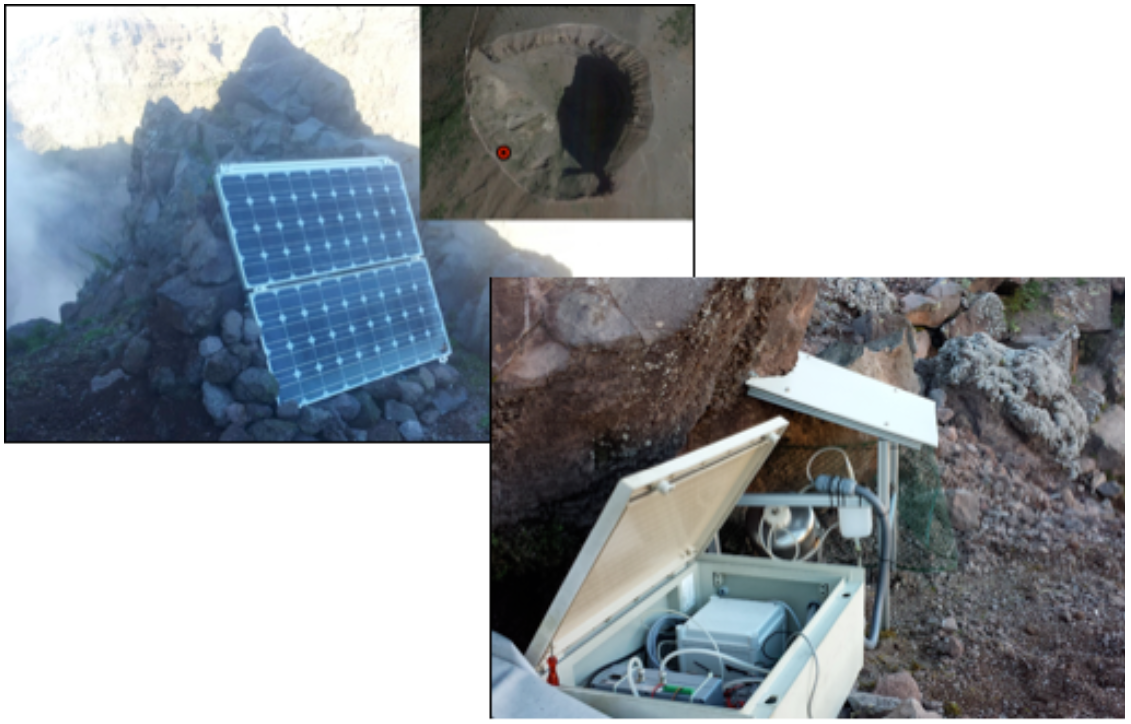To fully understand the behaviour of the volcano, scientists must monitor the behaviours of volcanoes. With there being approximately 1,500 active volcanoes across the globe, they have caused thousands of fatalities and destroyed millions of buildings. These devastating effects are caused by the deadly ash falls, mudflows, and pyroclastic flows that accompany eruptions. Many of these volcanoes are in close proximity to human dwellings, which makes you think, why do people live near volcanoes?
It is imperative that these volcanoes are supervised for harmonious and safe co-habitation, and it is also important to allow scientists to predict future volcanic activity.
Working with the Edinburgh Sensor’s Gascard, we find out how one of our customers uses it for the auditing of volcanic gas emissions in their country and in co-operation with other research institutes around the world.
Why Do People Live Near Volcanoes?
Some of the most densely populated areas of earth are in close proximity to volcanos, such as the region of Quito in Ecuador, where over 3 million people live near volcanoes, or in close vicinity to several volcanoes, despite the high risk of eruption.
Why, indeed, might you ask do people live near volcanoes?
- Volcanic rock and ash provides fertile land which produces high agricultural yield
- Geothermal energy can be harnessed, reducing local electricity costs
- Volcanoes can attract tourism which provides employment and generates revenue
- Lava can be mined to reveal valuable minerals such as diamonds, silver and gold
It is therefore vital that we do everything we can to oversee and predict volcanic activity so that we can provide eruption warnings and improve scientific understanding of how volcanoes work in order to reduce damage to life and property.
Volcanoes – What Is Observed and How?
Despite their unpredictability, scientists are able to use a variety of the following techniques to investigate the behaviour of volcanoes.
- Ground movements can be monitored using seismometers
- Changes in the landscape such as swellings which occur near to eruptions are measured by tilt meters and GPS satellites
- Temperature can be measured, which increases as magma begins to rise
- The gases that escape can be monitored, such as Carbon Dioxide and Sulphur Dioxide.
Edinburgh Sensors’ Gascard can be used for the continuous monitoring of Carbon Dioxide. This is important because the amount of gas emitted from the mouth of the volcano is directly related to the volume of magma sitting in the subsurface reservoir. Changes in the gas composition or the rate at which the volcano releases Sulphur Dioxide and Carbon Dioxide can be indicative of the activity occurring in the Volcano’s magma reservoir and the hydrothermal system such as an increase in magma supply. Therefore, this information is extremely useful in providing the knowledge allowing scientists to predict future volcanic activity and eruptions.
Using Edinburgh Sensor’s Gascard to Examine Volcanoes…
One of our customers is currently carrying out continuous geochemical studies on a large volcanic rim in the Mediterranean using Edinburgh Sensor’s Gascard. A multiparametric station has been installed for the acquisition of geochemical data and the heart of the station consists of an electronic data acquisition and control system designed and developed at the local observatory.
This station is configured to acquire the following parameters:
- CO2 flow from the ground (storage chamber method). The main range that they use for CO2 is 1-3000ppm and 0-10%.
- Temperature of one of the largest fumarolic emissions in the area
- Thermal gradient of the soil (near the CO2 flow measurement site)
- Temperature and atmospheric pressure
Data acquisition is carried out periodically and the data acquired is transmitted in real time and continuously to the observatory through the digital radio communication infrastructure managed by the same section and recently enhanced for the entire crater area of the volcano. This installation required the commitment of various units of personnel belongings to different functional units and was possible thanks to the multidisciplinary skills of the section.

Get In Touch
In order to prevent severe destruction it is vital that volcanoes are observed. At Edinburgh Sensors, we would be delighted to help with your gas monitoring requirements. Please view our range of gas sensors here or get in touch for more information.
More Equipment for Volcanic Research
Our sister company, Isotopx, also produces a product that can be used for the measurement of volcanic gases. The NGX is a noble gas mass spectrometer, it’s used to measure the isotope ratios of certain noble gases very precisely in very small samples. Why measure the isotope ratios? It’s because certain noble gas isotope ratios can vary depending on the Earth’s physical process such as tectonic plate movement. The measurement of the isotope ratios can help scientists understand the temperature of formation of a certain volcanic rock, or even be used as a proxy for the air temperature at that time.
In other words, the measurement of noble gas isotope ratios helps us to understand the evolution of our world. This relates neatly to volcanoes; the isotope ratios help us understand the age of the volcano. And trapped noble gases inside fluid inclusions in the volcanic rocks can give us information about what was happening during the time of eruption. The NGX mass spectrometer from Isotopx has two completely unique and patented technologies meaning it is the most sensitive and precise instrument of its kind. You can read more about it here.

